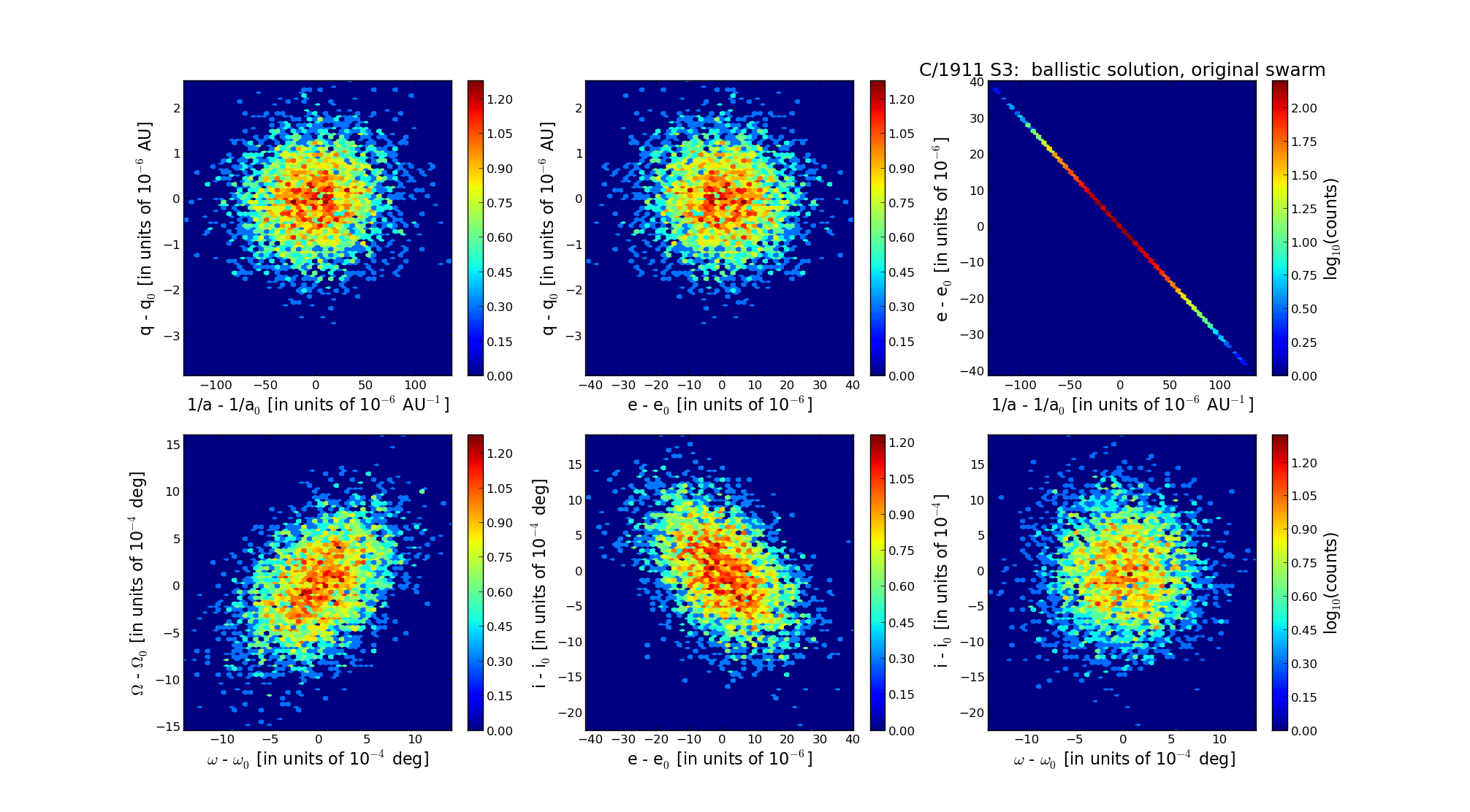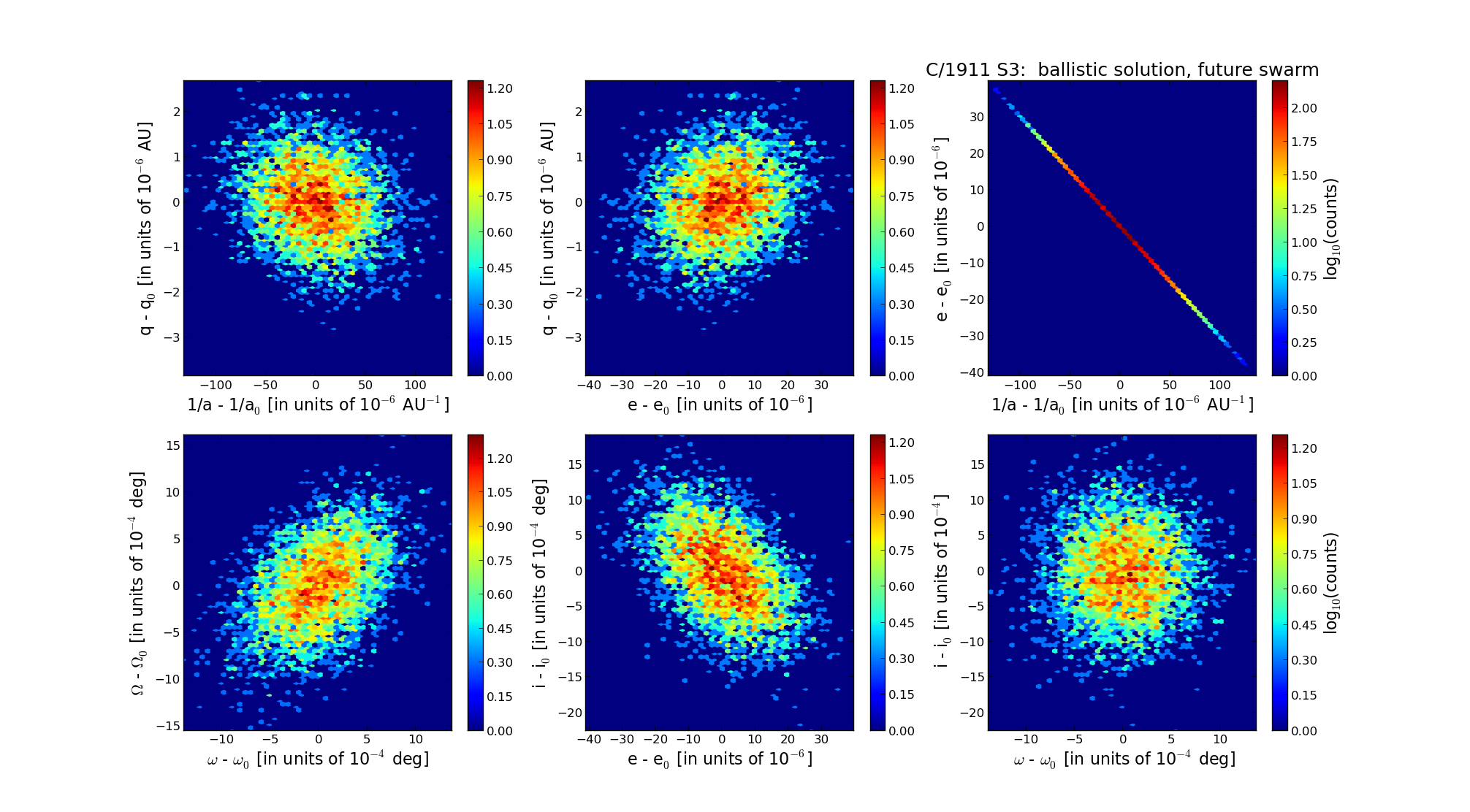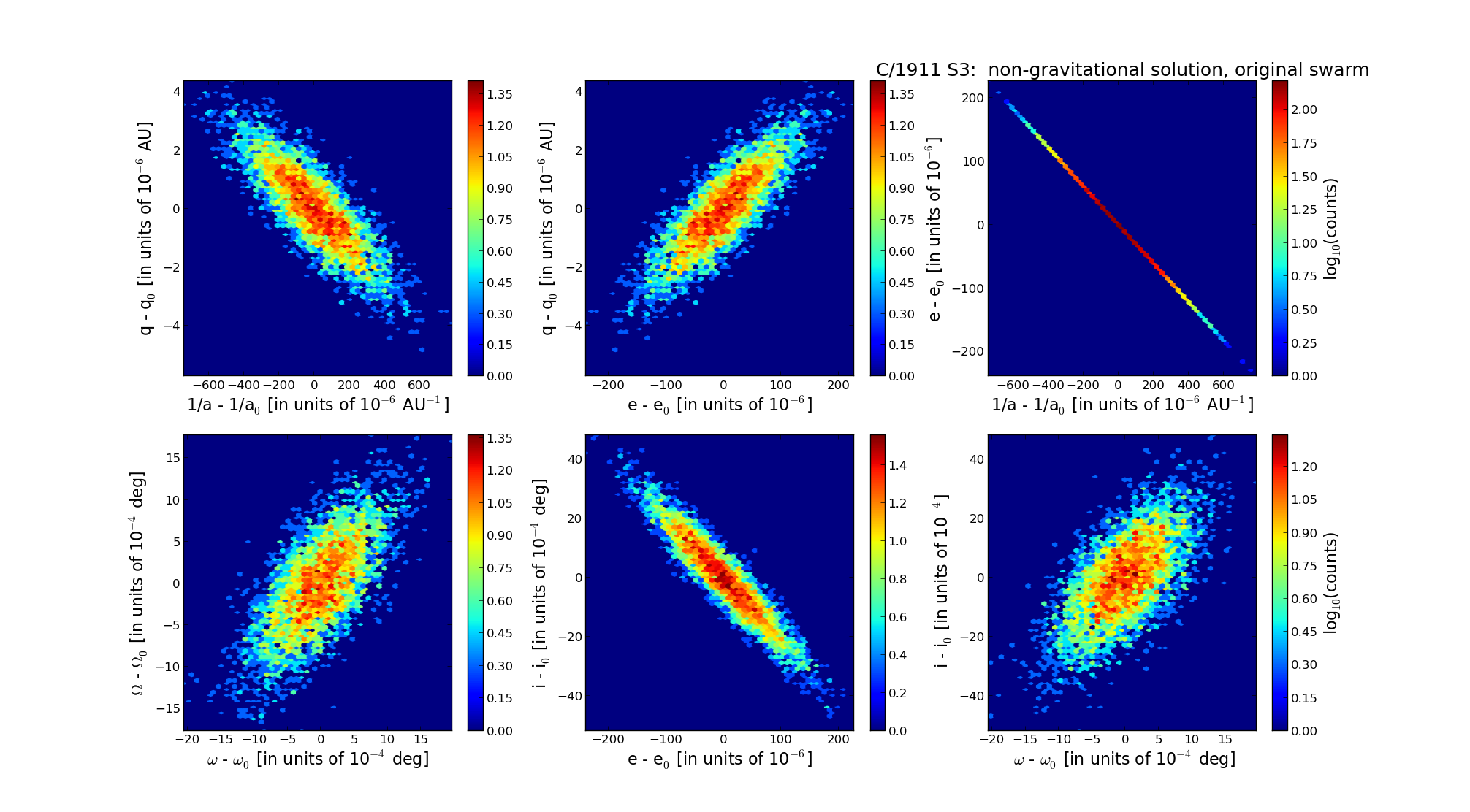| Solar System Dynamics & Planetology Group |
 |
C/1911 S3 Beljawsky |  |
| Solar System Dynamics & Planetology Group |
 |
C/1911 S3 Beljawsky |  |
| number of observations | 162 |
| number of residuals | 246 |
| data interval | 1911 Sep. 29 — 1912 Feb. 17 |
| rms [arcsec] | 2.35 |
| orbit quality class | 2a |
| Epoch (TT) | 19111011.0 | = JD 2419320.5 |
| time of perihelion passage (TT) | 19111010.764058 | ± 0.000076 |
| perihelion distance | 0.30342194 | ± 0.00000078 |
| eccentricity | 1.00017379 | ± 0.00001128 |
| argument of perihelion [deg] | 71.712390 | ± 0.000390 |
| longitude of the ascending node [deg] | 89.896351 | ± 0.000423 |
| inclination [deg] | 96.463409 | ± 0.000556 |
| inverse semimajor axis [10-6 au-1] | -572.78 | ± 37.17 |

| Epoch (TT) | 16160817 | |
| time of perihelion passage (TT) | 19111010.212422 | ± 0.000557 |
| perihelion distance | 0.30444763 | ± 0.00000077 |
| eccentricity | 1.00004987 | ± 0.00001120 |
| argument of perihelion [deg] | 71.678698 | ± 0.000389 |
| longitude of the ascending node [deg] | 89.139025 | ± 0.000420 |
| inclination [deg] | 96.440241 | ± 0.000553 |
| inverse semimajor axis [10-6 au-1] | -163.80 | ± 36.80 |

| Epoch (TT) | 22090720 | |
| time of perihelion passage (TT) | 19111011.596948 | ± 0.000548 |
| perihelion distance | 0.30043610 | ± 0.00000079 |
| eccentricity | 0.99997575 | ± 0.00001105 |
| argument of perihelion [deg] | 71.589527 | ± 0.000386 |
| longitude of the ascending node [deg] | 89.279608 | ± 0.000422 |
| inclination [deg] | 96.563646 | ± 0.000553 |
| inverse semimajor axis [10-6 au-1] | 80.70 | ± 36.79 |
| number of observations | 162 |
| number of residuals | 244 |
| data interval | 1911 Sep. 29 — 1912 Feb. 17 |
| rms [arcsec] | 2.10 |
| orbit quality class | 2b |
| Epoch (TT) | 19111011.0 | = JD 2419320.5 |
| time of perihelion passage (TT) | 19111010.764561 | ± 0.000128 |
| perihelion distance | 0.30341412 | ± 0.00000178 |
| eccentricity | 0.99988293 | ± 0.00006089 |
| argument of perihelion [deg] | 71.714197 | ± 0.000508 |
| longitude of the ascending node [deg] | 89.898109 | ± 0.000531 |
| inclination [deg] | 96.469009 | ± 0.001332 |
| inverse semimajor axis [10-6 au-1] | 385.83 | ± 200.70 |
| Nongravitational parameters [10-8 au/day2] | A1 = 3.930 ± 0.798 | A2 = 0.0 (assumed) | A3 = 0.0 (assumed) |

| Epoch (TT) | 16050616 | |
| time of perihelion passage (TT) | 19111010.198180 | ± 0.003218 |
| perihelion distance | 0.30444215 | ± 0.00000134 |
| eccentricity | 0.99975759 | ± 0.00006235 |
| argument of perihelion [deg] | 71.680472 | ± 0.000499 |
| longitude of the ascending node [deg] | 89.140777 | ± 0.000521 |
| inclination [deg] | 96.445791 | ± 0.001329 |
| inverse semimajor axis [10-6 au-1] | 796.26 | ± 204.79 |

| Epoch (TT) | 22210227 | |
| time of perihelion passage (TT) | 19111011.613216 | ± 0.003643 |
| perihelion distance | 0.30042613 | ± 0.00000226 |
| eccentricity | 0.99968737 | ± 0.00006151 |
| argument of perihelion [deg] | 71.591551 | ± 0.000534 |
| longitude of the ascending node [deg] | 89.281396 | ± 0.000529 |
| inclination [deg] | 96.569195 | ± 0.001329 |
| inverse semimajor axis [10-6 au-1] | 1040.62 | ± 204.76 |